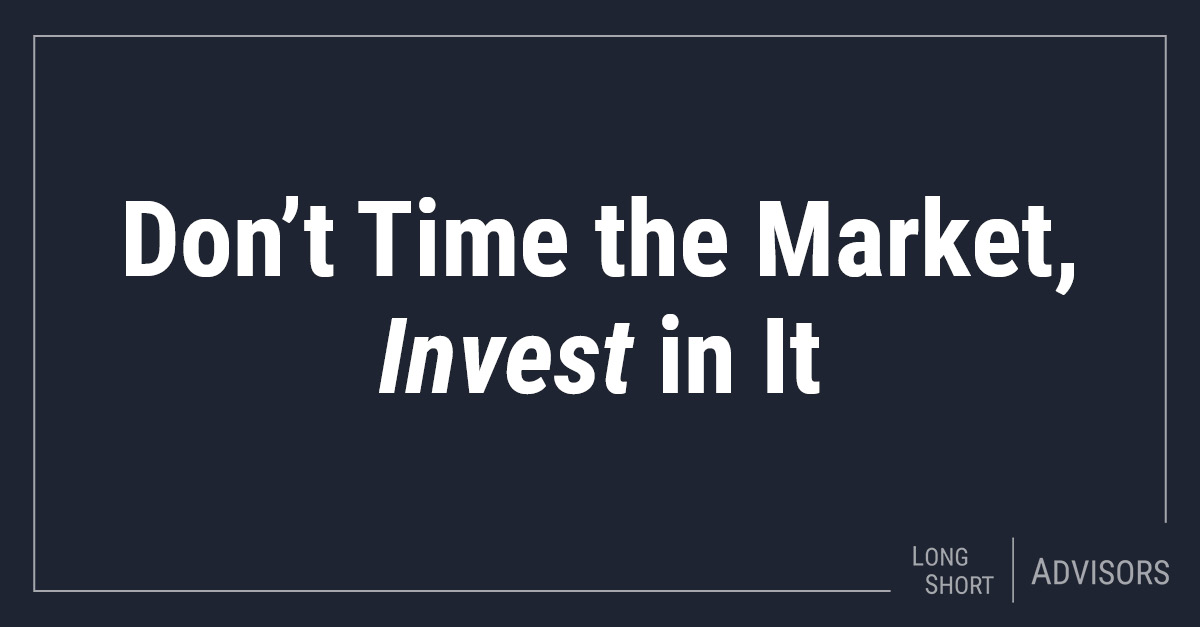Insights from Long Short Advisors
As we close the book on 2023, it is worth taking stock of an eventful and, in many ways, a surprising year. It was a year in which most market strategists and economic forecasters didn’t exactly cover themselves in glory. At the start of 2023, most of these observers anticipated a recession in 2023; instead, we had robust economic growth. Most expected high interest rates to crush economic activity; instead, buoyant consumer spending powered economic growth.
Nor were interest-rate prognosticators much more accurate. The yield on 10-year Treasuries zoomed from 3.25% in March 2023 to 5% in October—and then fell unexpectedly to 3.8%. Many investors, retail and institutional, were lured to short-term (one-year or less) Treasuries yielding above 5%, which, due to an inverted yield curve, seemed like the sweet spot in bonds. Those investors are now facing considerable reinvestment risk since these short-duration assets will mature soon with much lower rates on offer. The market is now pricing in 5-6 Fed rate cuts in 2024.
In truth, no one can divine market gyrations or events that will shape 2024—but that doesn’t stop the financial media or market pundits from proclaiming their predictions.
We know that, over extended periods, equities, allied with the compelling math of compounding, tend to generate handsome portfolio returns. The trouble is that the inevitable bouts of market turbulence shake out unnerved investors, who due to the way our brains are wired, tend to overreact to short-term events, extrapolate the recent past into the future, and lose sight of their overarching long-term investment goals.
In fact, there is considerable uncertainty surrounding 2024. Take geopolitics, for instance. Along with the US Presidential election and war in Ukraine, we now have an expanding conflict in the Middle East that is affecting shipping in the Red Sea and Suez Canal and threatens to spread from Gaza to Lebanon. In the US, inflation is down but not yet conquered; due to lag time, the full effects of the Fed’s interest rate hikes are still coursing through the economy and could potentially trigger a slowdown or recession. In 2023 most of the market pundits got it wrong. Why would their prognostications for the new year necessarily be any more accurate?
Conclusion
This picture may appear murky, but there is a useful portfolio equity strategy that can help you meet your investment goals while hedging downside risk: a long-short equity fund. Instead of making a futile attempt to time markets, investing in a well-managed long-short fund will reduce volatility and equity portfolio drawdowns during bear markets while keeping you invested. Then, at the appropriate time, an investor can choose to increase or decrease equity market exposure.
Disclosures:
The Morningstar Rating™ for funds, or "star rating", is calculated for managed products (including mutual funds, variable annuity and variable life subaccounts, exchange-traded funds, closed-end funds, and separate accounts) with at least a three-year history. Exchange-traded funds and open-ended mutual funds are considered a single population for comparative purposes. It is calculated based on a Morningstar Risk-Adjusted Return measure that accounts for variation in a managed product's monthly excess performance, placing more emphasis on downward variations and rewarding consistent performance. The Morningstar Rating does not include any adjustment for sales loads. The top 10% of products in each product category receive 5 stars, the next 22.5% receive 4 stars, the next 35% receive 3 stars, the next 22.5% receive 2 stars, and the bottom 10% receive 1 star. The Overall Morningstar Rating for a managed product is derived from a weighted average of the performance figures associated with its three-, five-, and 10-year (if applicable) Morningstar Rating metrics. The weights are: 100% three-year rating for 36-59 months of total returns, 60% five-year rating/40% three-year rating for 60-119 months of total returns, and 50% 10-year rating/30% five-year rating/20% three-year rating for 120 or more months of total returns. While the 10-year overall star rating formula seems to give the most weight to the 10- year period, the most recent three-year period actually has the greatest impact because it is included in all three rating periods. cross the US Long Short Equity category, as of 12/31/2023, LSOFX received the following Morningstar Rating™ for the 3-year, 5-year, 10-year periods, respectively: 4 stars out of 154 funds, 4 stars out of 136 funds, and 4 stars out of 72 funds.
17780825-UFD 01/09/2024







